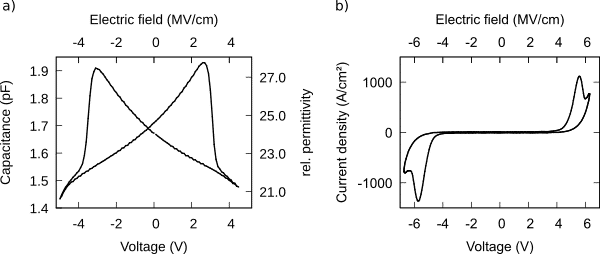
Ultrathin ferroelectric AlScN: Comparison of epitaxial and non-epitaxial film stacks as well as influence of electrode design
2Department of Material Science, Kiel University, Kiel, Germany
3Business Unit MEMS Applications, Fraunhofer Institute for Silicon Technology (ISIT), Itzehoe, Germany
The recently discovered new family of wurtzite-type ferroelectrics are attractive due to their unique properties, such as high coercive field and high remanent polarization, as well as due to their natural structural compatibility with III-N technology. Very recently we demonstrated the thickness scaling of sputter-deposited ferroelectric AlScN down to 10 nm using an in situ capping approach to prevent oxidation in combination with an epitaxial growth on Pt/GaN/sapphire templates.[1] Here we would like to report on ultrathin (10 nm) ferroelectric AlScN grown non-epitaxially on a Pt/Ti/SiO2/Si template by sputter-deposition, demonstrating the potential of integrating ferroelectric AlScN into a much broader range of ferroelectric-based devices with high storage density and low power operation. The ferroelectric response of ultrathin (down to at least 10 nm film thickness) polycrystalline AlScN is revealed in detail by current-density- (J-V) as well as capacitance over voltage (C-V) loops and compared to all-epitaxially grown AlScN. Furthermore, due to the comparably high coercive field of AlScN, the electrode design and thus the electrical field profile has a significant impact on the breakdown resistance especially of ultrathin films. Therefore, we investigate the impact of SiO passivation as well as the etch profile of our capacitors structured via lithography and ion beam etching on the electrical response in order to provide a basis for scaling the thickness of wurtzite-type ferroelectrics even further to the single digit nm range.

Fig. 1: a) C-V loop and b) J-V loop demonstrating full ferroelectric switching of a Pt/AlScN(10 nm)/Pt capacitor deposited on a Ti/SiO2/Si template.
[1] Schönweger, Georg et. al., Phys. Status Solidi RRL., 2022, 2200312
Powered by Eventact EMS
